Reading comprehension Normal Vowels and Consonants Worksheets for Ages 4-9
11 filtered results
-
From - To
Boost your child's reading skills with our engaging "Normal Vowels and Consonants Worksheets" designed for ages 4-9! These interactive pages help young learners grasp the fundamentals of vowel and consonant recognition while enhancing their reading comprehension. Each worksheet is crafted to foster essential skills through fun activities that encourage letter sound association and word formation. Young readers will enjoy coloring, tracing, and matching exercises that promote learning in a playful environment. Tailored for both classroom and home use, our resources provide parents and educators with effective tools to support literacy development and nurture a lifelong love for reading. Explore our worksheets today!
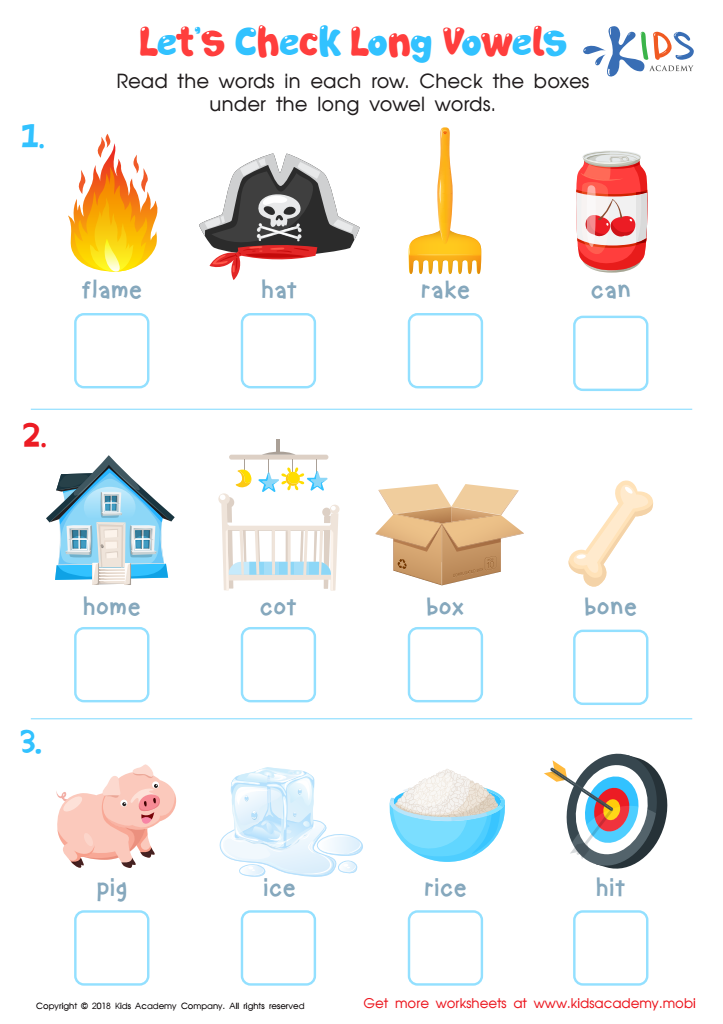

Let's Check Long Vowels: Assessment Worksheet


short vowels Worksheet
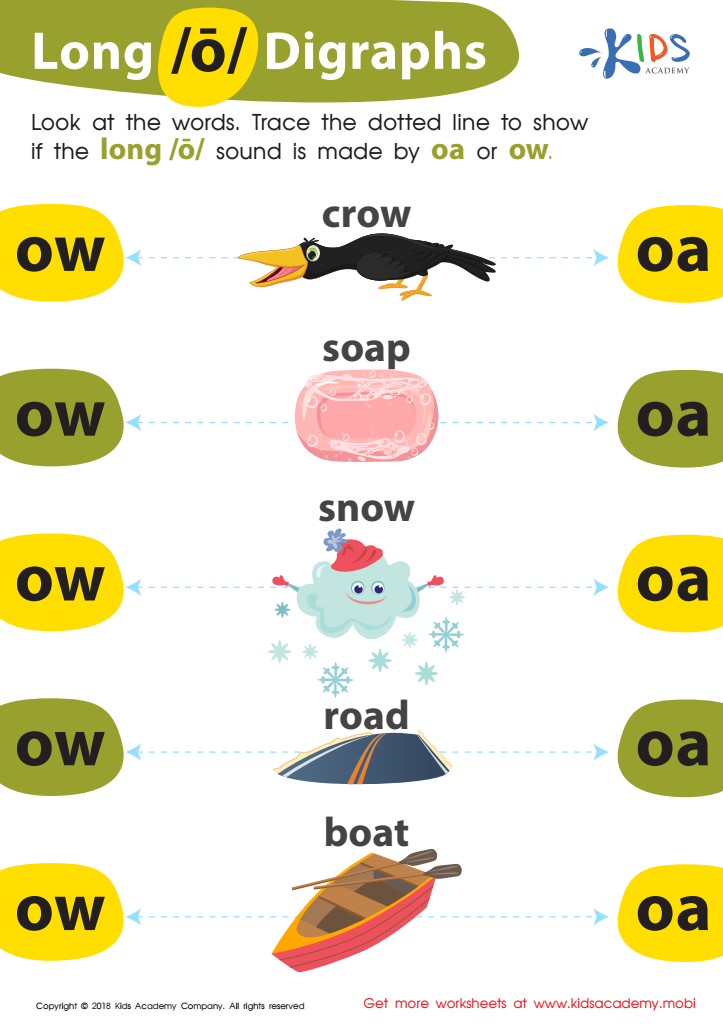

Reading: Long O Digraphs Worksheet
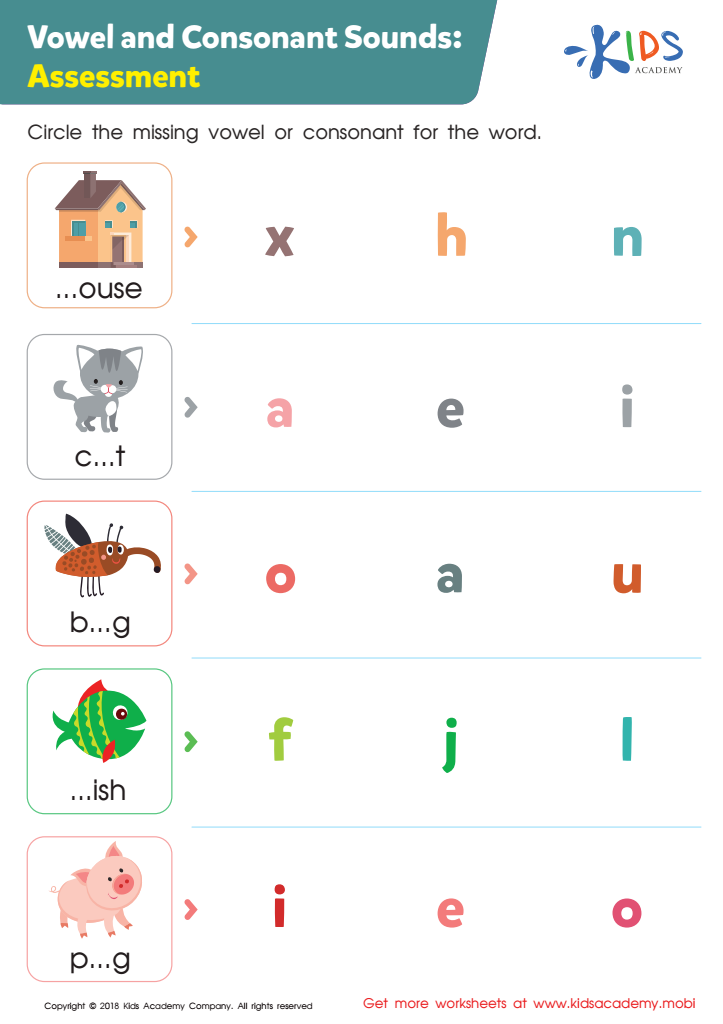

Vowel and Consonant Sounds: Assessment Worksheet


Short Vowels /e/, /i/, and /u/ Worksheet
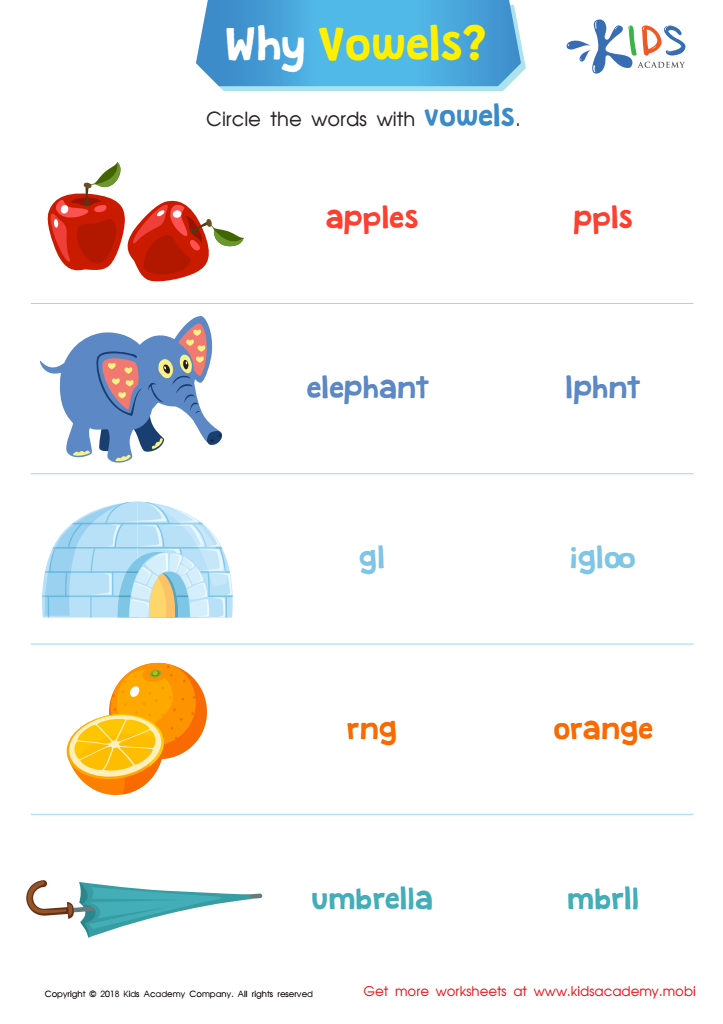

Why Vowels? Reading Worksheet
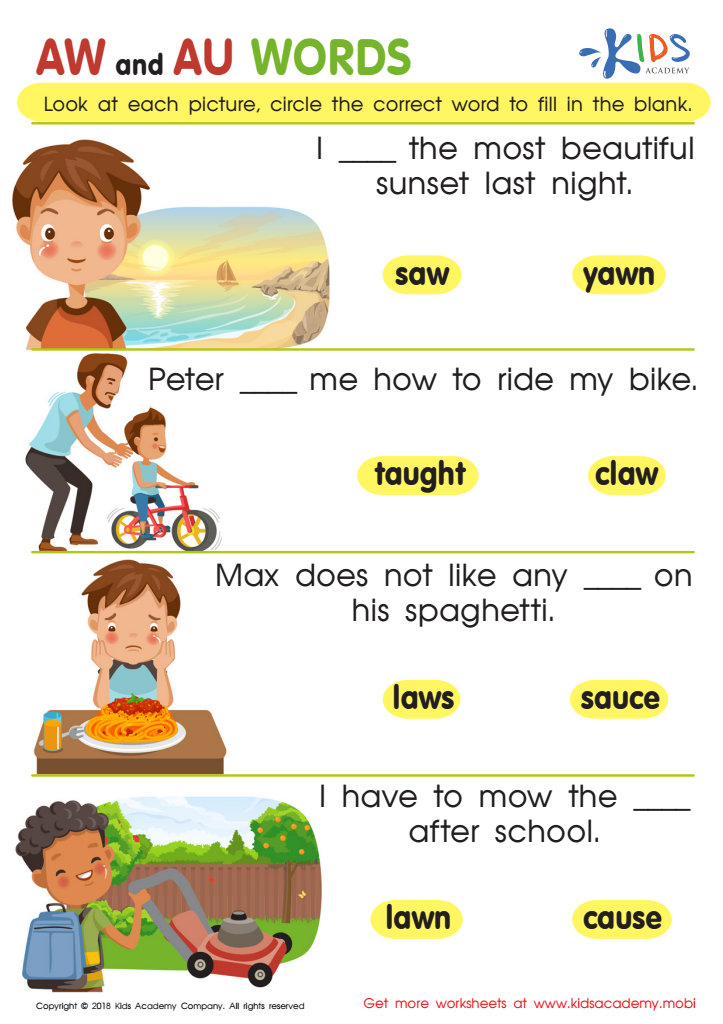

Reading: AW and AU Words Worksheet
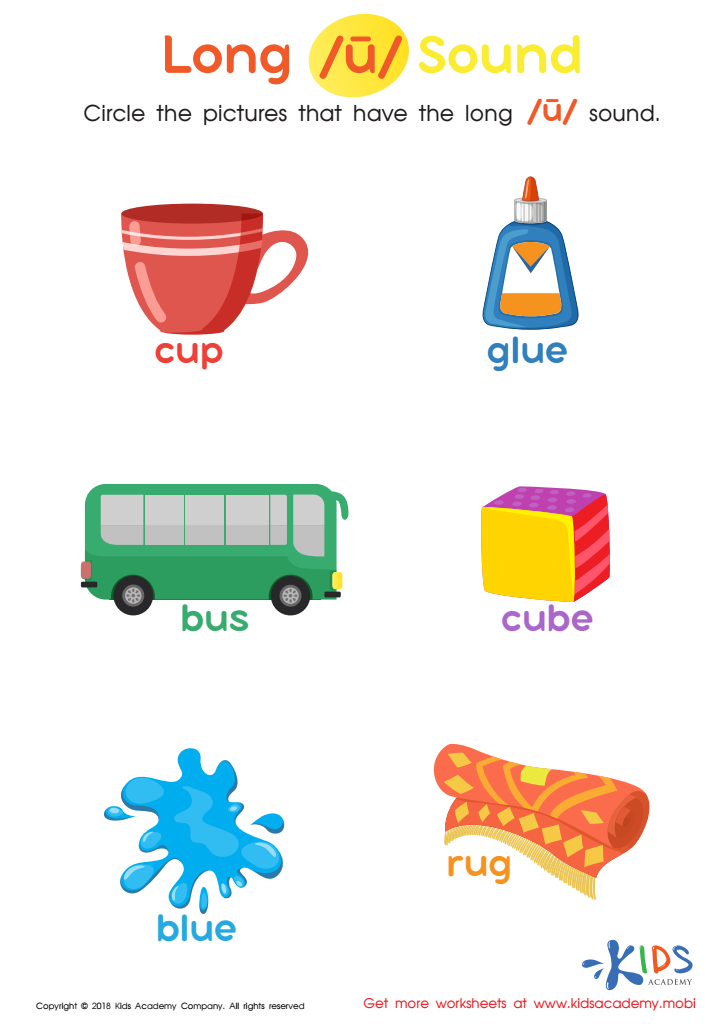

Long «u» Sound Worksheet
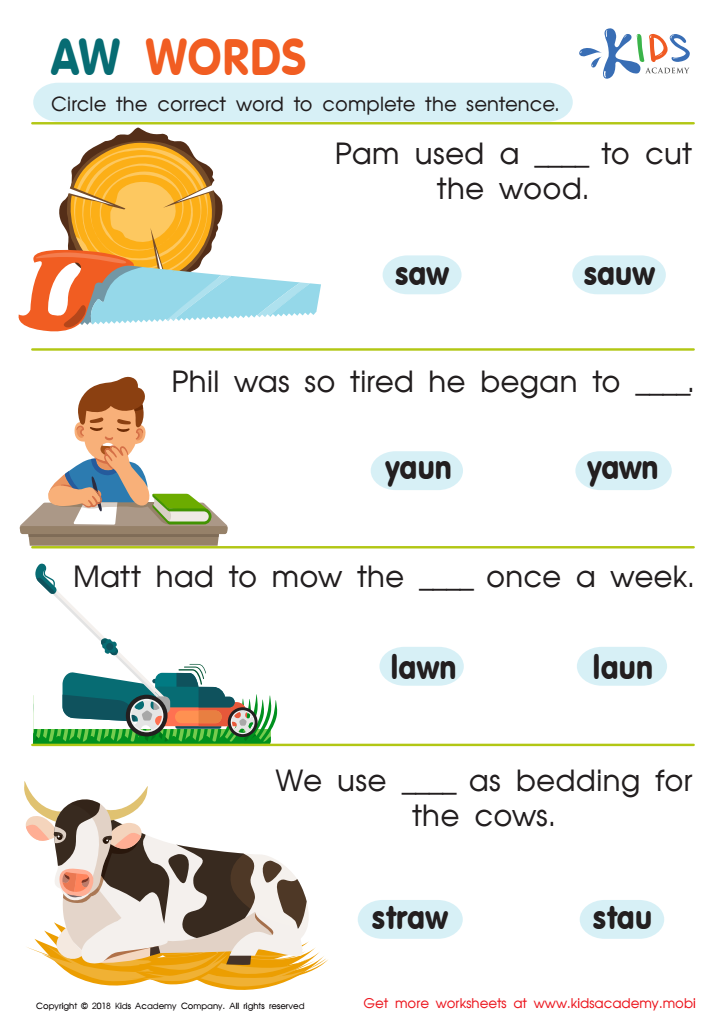

Reading: AW Words Worksheet
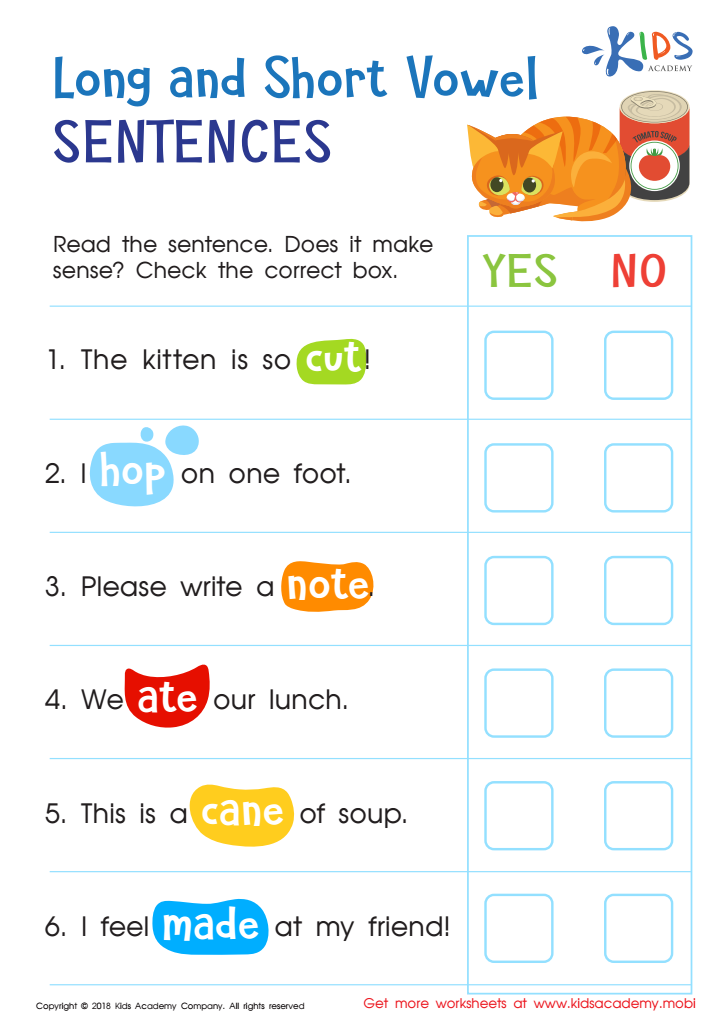

Long and Short Vowel Sentences: Assessment Worksheet
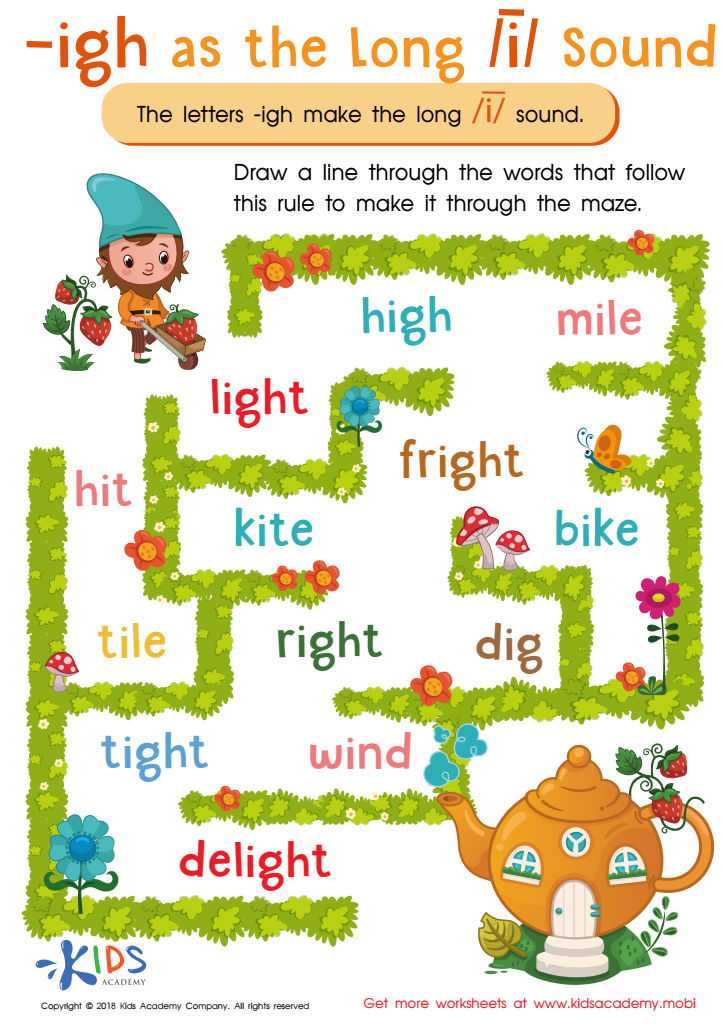

Reading: IGH as Long I Worksheet
Reading comprehension is a vital skill that lays the foundation for a child's academic success and lifelong learning. For children aged 4 to 9, understanding normal vowels and consonants is crucial as it directly impacts their ability to decode words and construct meaning from texts. When parents and teachers prioritize this aspect of literacy, they help children build essential phonemic awareness—the ability to hear, identify, and manipulate individual sounds in spoken words.
Focusing on normal vowels, such as 'a,' 'e,' 'i,' 'o,' and 'u,' along with consonants, helps children grasp phonics rules, which enhances their decoding skills. Strong phonics knowledge facilitates smoother reading experiences and allows children to tackle more complex texts as they progress. Moreover, understanding how vowels and consonants work together forms the backbone of vocabulary development, fostering greater comprehension of spoken and written language.
By supporting children's mastery of these concepts, parents and teachers can promote confidence and enjoyment in reading. Not only does improved reading comprehension enrich children's language skills, but it also encourages critical thinking and creativity. Investing time and resources in this foundational literacy skill ultimately empowers children to navigate the world of knowledge with greater ease and enthusiasm.
 Assign to My Students
Assign to My Students








